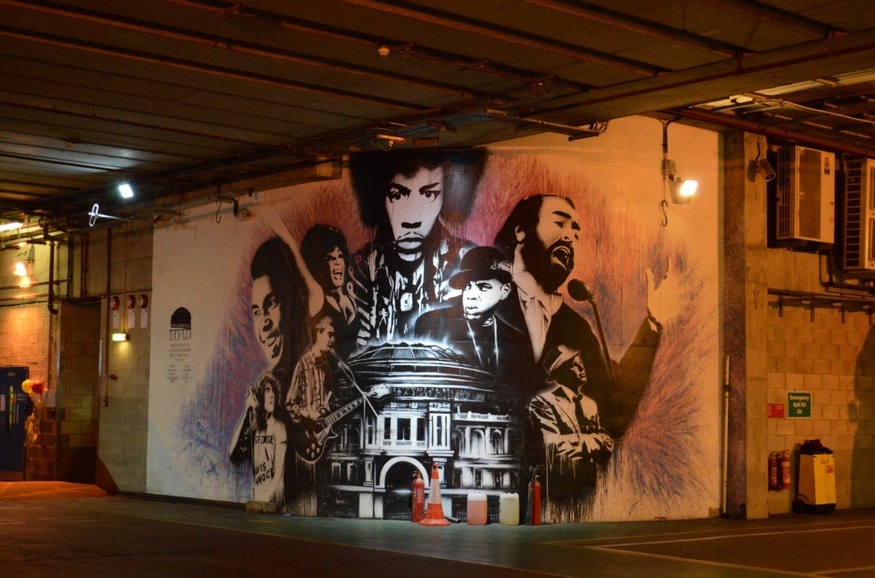
When lazy statisticians say something is large enough to fill the Royal Albert Hall X times, which Royal Albert Hall do they mean? The plush, gilded auditorium with its five storeys, multiple entrances, labyrinthine staircases, four restaurants and 15 bars? Or do they include in their calculations the secret, alternative Royal Albert Hall under the Royal Albert Hall? Far below those curved, cream-painted corridors hides another universe, as deep as the hall itself is tall.

Admittedly it wasn't always quite so deep, though the Victorian foundations are pretty substantial. Back in 2000, a massive underground project created a 'backstage' area for the 21st century to allow more, and better, events. With the new basement main stage events went from a respectable 240 a year to more than 400, plus another 1,000 more in other areas of the building.

Leaving the carpeted opulence of the public spaces it becomes impossible to know where you are in relation to the outside. One moment you're walking down concrete tunnel, the next you're going through a door and for a few metres find yourself in plushly decorated corridor, before finding another portal half-human height, and diving back down into what turns out to be several levels lower than you thought you were. All very Alice in Wonderland.

Oddly, the basement isn't is deserted. Neither is it dark. Below stairs, the RAH is as close to a living organism as a building can get. Around 300 people permanently work in, above and below the magnificent velvet and gilt void, 24 hours a day, 365 days a year. On top of that there are temporary staff, catering and incoming crews.

Officially, there are five storeys below ground. "Well, four and a half," says Guy Pengelly, the Hall's health and safety manager. Even he doesn't seem too sure as to what counts as a level, since some areas take up far more than one, others considerably less, creating a jumble of heights to go with the maze of passageways.

Nothing is what it seems. Seemingly solid walls might have something under them, behind them, over them, or all three. Half-sized doors lead to full sized corridors, full-sized doors lead to very little at all, and tiny crawl-spaces once used as Victorian ventilation ducts now choke with a snake pit of cables. From time to time, oddities turn up — of course the Royal Albert Hall boasts a (usually empty) gun cupboard. "The Moscow Militia keep their armaments there when they come for the Classical Spectacular," notes Guy Pengelly. "This is what we call the Malkovich corridor," he continues, bending almost double to get inside a tiny hatchway straight out of the movie Being John Malkovich.
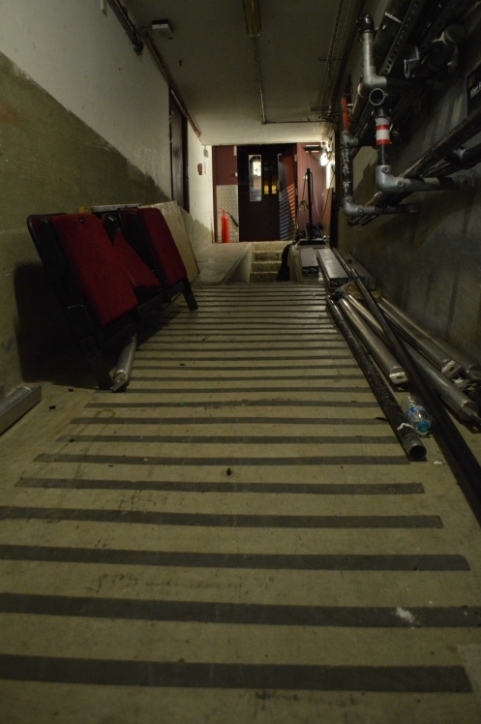
It leads to a full-height corridor and, eventually, under the stage where Pengelly points out trapdoors used for spectaculars. Another hole in the floor above reveals a gigantic hydraulic lift transporting flight cases to different heights of the stage.

Even the (thankfully wide) 19th century, gently curving underground corridors now sport cages with ranks of mops and buckets, trollies of extra seating, and the odd redundant chandelier. Five levels of storage clearly isn’t enough, but as a Grade 1 listed building, every change below stairs, from a broom cupboard to a car park, needs planning permission, so the RAH is in the middle of a second Big Dig, hollowing out an underground city beneath the entirety of the pavements to the south of the hall. A knock-on bonus for the public will be that Victorian corridors currently jammed with crates of crocks and racks of seats will become exhibition areas.

Unsurprisingly the first layer below ground is an extension of backstage. Some of the dressing rooms can take up to 150 people; some of the spectaculars use all of them. "A lot of people started out front of house," says Pengelly, peering into the Stewards' Room, filled with uniforms. "Our artistic director, Lucy Noble, started out as a steward."

There seem to be several staff canteens, catering for artists, visiting tech crews and the permanent staff. In the main artist's canteen, they still talk of the Masterchef challenge where Janet Street-Porter cooked for the entire cast of Cirque du Soleil.

The vast underground loading bay is constantly busy. It can take three articulated lorries at once. Cirque du Soleil has up to 26, so for large events, one-in-one-out policy is strictly adhered to. The bay is so enormous that suitably grungy events are occasionally held down there. Chess boxing, London Contemporary Dance, a silent disco, and the Red Bull Rave have all played out in front of the street-artist created RAH-themed murals.

Fully-equipped workshops host a permanent, troglodyte staff of 10 to 12 folk that manage any issues arising. "Anything can be repaired," says Alan, a carpenter-joiner-upholster who's been doing just that for over 15 years. A light bulb store the size of a small corner shop is the domain of another chap whose job, every day, is to check every lamp in the building is working. He's got a system.

Along yet another corridor live the electrical and lighting sections. Rolls of neatly-coiled cables and ranks of theatrical lanterns jostle for space with flight cases and the odd glitter ball.

Onward and downward. Every so often on the descent, the original Victorian walls and barrel-vaulted brick ceilings come back into view. "The people who built the hall were way ahead of their day," says Pengelly. "They were engineers, not architects. People with forethought. They had fire safety on a par with or even better than modern standards." He points out ancient ventilation holes. "On the first night it's rumoured they sprayed perfume up it so Queen Victoria wouldn't have to smell the peasants."

The car-park level, impossible to work out the exact storey, is a fortress of lock-ups for the residents of Albert Mansions, opposite. A space recently went for £350,000.
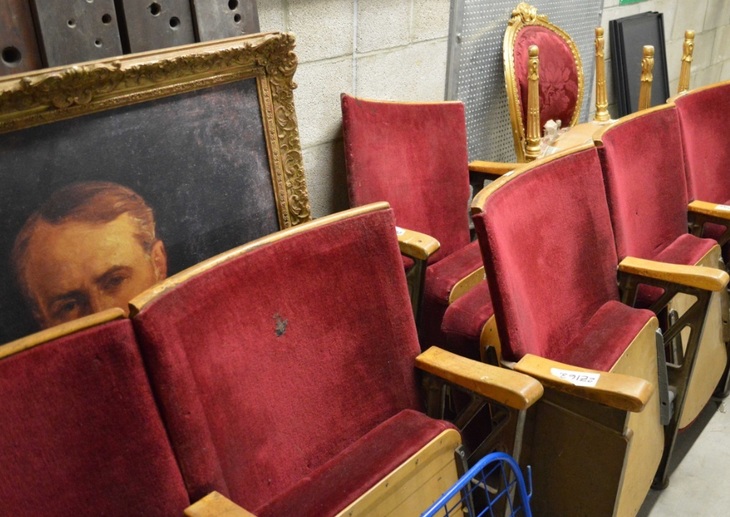
Reaching the service area involves more up and down, more doubling back and more corridors. Each part of the hall is powered by different switchboards and there are three different power supplies, not counting the battery backup that can last four hours to allow the building to be fully evacuated. "The Earls Court Substation went down three or four years ago and we had to switch to batteries; it was during the day and it all worked perfectly," says Pengelly with more than a hint of pride in his voice.
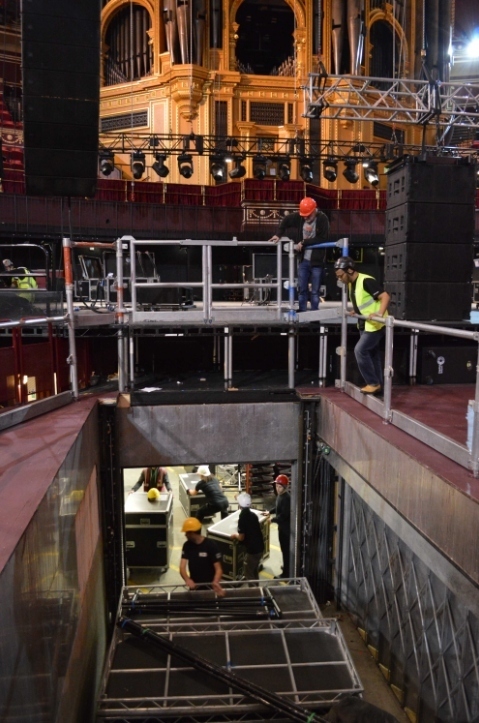
The great organ's 9,999 pipes famously loom over the stage, but the instrument's true workings are deep in the bowels of the basement. Now driven by electricity it still needs some old fashioned TLC. Without a teeny-tiny pipe constantly supplying water, the delicate wooden reeds would seize.

On the subject of water, a massive steel reserve tank contains 70,000 litres for the sprinkler system. It takes a day to drain down, and a day to fill, a fact discovered when a stray double bass accidentally hit a sprinkler head a couple of years ago. It shares storey-space, (though thankfully not actual space) with a room containing every programme of every event the hall has hosted since its opening night.
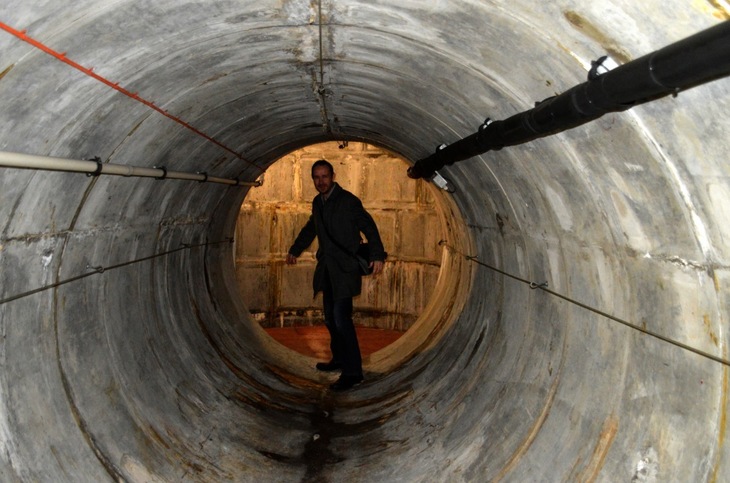
The Royal Albert Hall's basement hosts one last surprise. Lowest of all, in the very sump of the building, a wind tunnel straight out of a James Bond credits sequence drags air into the modern ventilation system. High enough to take a tall man, one notably short one (Tom Cruise), turned it down for one of the Mission Impossible movies. Happily our very own Matt Brown had no such scruples…
Part 2 of the Secrets of the Royal Albert Hall repairs to the other extreme of the building: its incredible — and terrifying — roof.
All images © Sandra Lawrence



